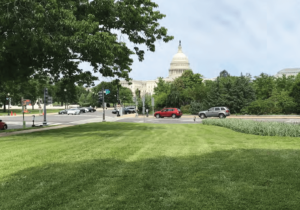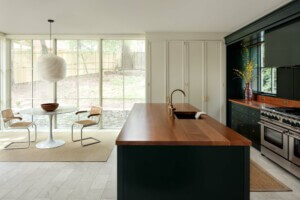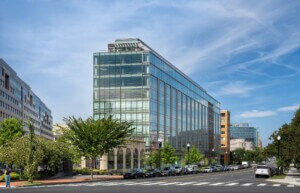On Thursday, the Smithsonian Institution’s Hirshhorn Museum and Sculpture Garden formally revealed additional information and renderings of photographer and architect Hiroshi Sugimoto’s garden revamp.
In an online public meeting the day before the official announcement, viewers got to learn about the project’s latest iteration. Sugimoto’s design will be only the second comprehensive update of the Washington, D.C. museum’s Gordon Bunshaft-designed campus, which debuted in 1974. Bunshaft’s garden, as well as its extensive 1981 renovation, was influenced by Japanese landscape architecture and garden design. According to museum leaders, plans will sustain the ethos of the original design while adding less-visible but much needed infrastructure updates and enhancing amenities like seating and shade.

Hirshhorn officials wanted the design to be inviting and they knew it needed to meet installation and display requirements for artworks from the near past, present, and future—requirements that have changed since the site was built out in 1974 and renovated seven years later. To do this, Sugimoto has proposed expanding the reflecting pool built in 1974 and adding a platform that can be used to display sculpture and stage performance art. Museum leaders hope that the enlarged water feature will also help to entice visitors from the National Mall.
Sugimoto has also proposed expanding the seating and shading from landscape architect Lester Collins’ 1981 update and using stacked stone to both improve acoustics and exhibit works across the garden, a scheme which extends to the partition wall between the east and west galleries. These stone walls are, in turn, meant to dialogue with the sculpture garden’s concrete walls.
In 2019, the National Capital Planning Commission (NCPC) and the Commission of Fine Arts (CFA) approved Sugimoto’s concept, and in December of last year, the NCPC gave the plans a preliminary green light.
The redesign of the Hirshhorn sculpture garden has been nothing short of controversial since the overhaul was first announced. In 2019, The Cultural Landscape Foundation designated the sculpture garden (specifically the early 1980s overhaul by Collins) as being threatened as part of the nonprofit’s Landslide program, which was established to raise awareness of seminal landscapes that are endangered or at-risk of being significantly altered or demolished.
“If this year of Covid has taught us anything, it is that public green space fills a deep human need for a place where we can congregate without crowding and feel that sense of social belonging that comes with the sight of others engaged in the same activity as us,” wrote Michael Lewis in a March 11 Wall Street Journal op-ed published in reaction to the proposed changes. “To be fair, the garden has not been well maintained, perhaps by design. But you reach for the weed-whacker before the wrecking ball.”
“If it ain’t broke, don’t break it,” added Lewis.
The public will have the opportunity to see a mockup of the stacked stone element during a seventh meeting planned for the near future. Garden officials say they expect to submit a final design to the NCPC and CFA for review and approval sometime this year.
Sugimoto leads a design team that includes his firm, Tokyo-based New Material Research Laboratory, as well as Brooklyn’s YUN Architecture, the D.C. office of Quinn Evans Architects, and Alexandria, Virginia-based landscape architecture and urban design studio Rhodeside & Harwell.
Detailed information about the proposed changes can be found here.











